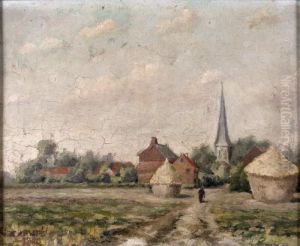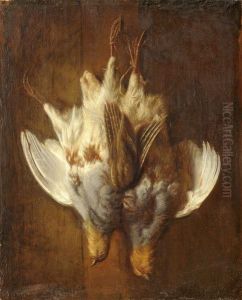Louis Lucien J.B. Schmidt Paintings
Louis Lucien J.B. Schmidt, born in 1845, was a Belgian artist whose work spanned across the second half of the 19th century and the early years of the 20th century, a period marked by significant transformations in European art. Not widely known outside specialist circles, Schmidt's contributions nevertheless offer insight into the evolving art scenes of his time, particularly within Belgium, a country with a rich artistic heritage that was navigating its own modern identity amidst the broader European context.
Schmidt's artistic journey was reflective of the era's shifting tastes and the experimentation that characterized the period. Initially trained in traditional techniques, he was adept in both painting and sculpture, embracing subjects ranging from portraiture to landscapes, and occasionally, genre scenes. His early works demonstrate a strong grounding in the academic style, favoring precision, detailed realism, and a certain adherence to classical themes and compositions.
As the 19th century waned, the art world was pulsating with new movements such as Impressionism, Symbolism, and eventually, Modernism. Schmidt, like many of his contemporaries, was influenced by these shifts. His later works show an evolving style, with looser brushwork, a brighter palette, and an increasing interest in capturing moments of everyday life, possibly reflecting the influence of Impressionism. However, Schmidt did not fully embrace any single movement. Instead, his work remained eclectic, a testament to his personal artistic exploration rather than a strict adherence to the dominant trends of his time.
Despite his talents, Louis Lucien J.B. Schmidt's career was relatively modest, with limited commercial success during his lifetime. His works were appreciated more by his peers and local art enthusiasts than by the broader market. Yet, his dedication to his craft and his ability to navigate through different artistic styles contribute to our understanding of the period's complexity and the diverse responses from artists to the rapid changes around them.
Schmidt passed away in 1918, amidst the turmoil of World War I, a conflict that deeply affected Belgium and its artistic community. While he may not have achieved widespread fame, his legacy is preserved in the collections of Belgian museums and in the annals of the country's art history, serving as a bridge between the traditional and the modern, and reflecting the nuanced journey of an artist through one of Europe's most dynamic artistic epochs.


